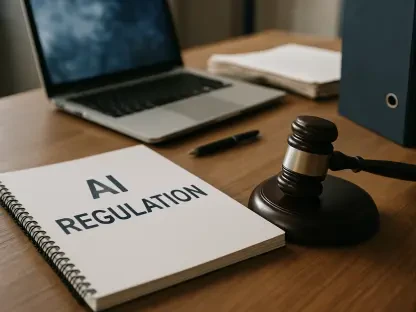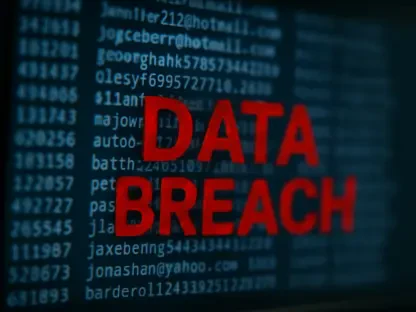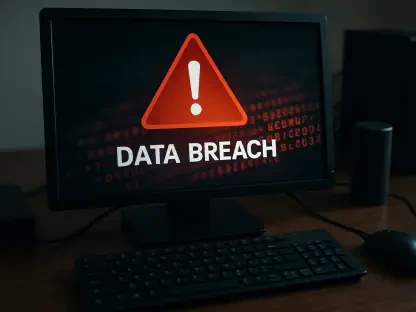This how-to guide is designed to help organizations uncover and address the hidden costs associated with penetration testing (pen testing), a crucial cybersecurity practice for identifying vulnerabilities in IT systems. By following the structured steps and insights provided, readers will learn how to optimize their pen testing strategies, minimize unexpected financial and operational burdens, and adopt innovative solutions that balance robust security with budget efficiency. The purpose of this guide is to transform a potentially resource-draining process into a streamlined, cost-effective component of a comprehensive cybersecurity framework, ensuring systems remain protected without compromising operational stability.
Pen testing has become an indispensable tool in safeguarding digital assets against ever-evolving cyber threats. Consider a scenario where a mid-sized enterprise, after a significant data breach, discovers that unaddressed vulnerabilities could have been identified through proper testing—yet the costs of traditional methods deterred them from regular assessments. This guide sheds light on such challenges, revealing how hidden expenses can silently erode the effectiveness of security measures. It aims to equip organizations with practical strategies to navigate these complexities, ensuring that the benefits of pen testing are not overshadowed by unforeseen burdens.
Beyond the surface-level expenses, many organizations fail to account for the deeper implications of pen testing on their resources and operations. This guide explores not only the financial aspects but also the administrative and operational disruptions that often go unnoticed until they impact the bottom line. By offering a clear roadmap, it empowers decision-makers to make informed choices, adopt modern approaches, and maintain a strong security posture in an increasingly dynamic threat landscape.
Why Pen Testing Costs More Than Expected
Pen testing, often termed ethical hacking, involves simulating cyberattacks to test the resilience of an organization’s IT infrastructure. While the primary aim is to strengthen defenses by uncovering weaknesses, the process frequently entails costs that extend beyond initial budgets. Many fail to recognize that traditional models can introduce layers of complexity, from logistical coordination to post-test remediation, which can diminish the intended value if not managed with precision.
Historically, pen testing has been viewed as a periodic necessity, akin to a financial audit, providing external validation of security measures as noted by authoritative bodies like the UK’s National Cyber Security Centre (NCSC). However, the conventional approach often demands significant internal resources, diverting focus from core business functions. This guide seeks to dissect these overlooked expenses, offering clarity on where costs accumulate and how they can be mitigated effectively.
The journey to a cost-effective pen testing strategy begins with understanding the full spectrum of associated expenses. From administrative overheads to operational interruptions, each element plays a role in shaping the overall investment. By addressing these factors head-on, organizations can better align their security efforts with budgetary constraints, ensuring a sustainable approach to cybersecurity.
Step-by-Step Guide to Uncovering and Mitigating Hidden Costs
Step 1: Assess Administrative Overheads
Begin by evaluating the internal effort required to manage pen testing logistics. This includes scheduling sessions, coordinating with external testers, and preparing detailed system inventories along with access credentials. These tasks, while seemingly minor, can consume substantial time, pulling staff away from their primary duties and creating a ripple effect on productivity.
To minimize this burden, consider establishing a dedicated point of contact or team to handle pen testing coordination. Streamlining communication with testers and maintaining up-to-date documentation can reduce preparation time. Additionally, leveraging automation tools for inventory management can further alleviate the administrative load, allowing employees to maintain focus on essential operations.
A proactive approach to administrative planning also involves setting clear timelines and expectations with all stakeholders. By anticipating potential bottlenecks, such as delays in providing access or aligning schedules, organizations can avoid last-minute scrambles that exacerbate resource drain. This step lays the foundation for a smoother testing process.
Step 2: Define and Control Testing Scope
The next critical step is to meticulously define the scope of the pen test, specifying which systems, applications, or networks will be evaluated and which are off-limits. Without a well-defined scope, testing can spiral into scope creep, where objectives expand mid-process due to evolving IT environments or unclear goals, leading to escalated costs and effort.
To prevent this, collaborate closely with testers during the planning phase to establish precise boundaries based on risk priorities. Documenting the scope in detail and reviewing it regularly as IT assets change ensures alignment with organizational needs. A tip here is to prioritize high-risk areas first, avoiding unnecessary testing of low-impact systems that inflate expenses.
Regularly revisiting the scope during complex projects can also help manage unexpected expansions. If additional testing becomes necessary, assess its impact on budget and resources before proceeding. This disciplined approach helps maintain control over costs while ensuring that critical vulnerabilities are addressed without overextending the project.
Step 3: Minimize Operational Disruptions
Operational interruptions during pen testing windows represent another hidden cost that must be managed. Testing often requires systems to be taken offline or accessed in ways that disrupt normal workflows, leading to downtime or reduced efficiency across departments. Recognizing these indirect impacts is essential for a comprehensive cost assessment.
To mitigate disruptions, schedule testing during off-peak hours or maintenance windows when business impact is minimal. Communicating testing timelines to all relevant teams ensures they can plan around potential interruptions. Additionally, consider staggered testing approaches, where only specific segments are evaluated at a time, preserving overall functionality.
Engaging with testers to understand their methods can also reveal opportunities to reduce interference. Some may offer non-intrusive techniques or simulations that mimic attacks without affecting live systems. By prioritizing minimal disruption, organizations can safeguard productivity while still achieving thorough security evaluations.
Step 4: Plan for Remediation and Re-Testing Costs
After testing, addressing identified vulnerabilities and conducting re-tests to verify fixes often introduce unbudgeted expenses. Remediation may involve consultations with testers, software updates, or infrastructure changes, each adding to the financial tally. Planning for this phase is crucial to avoid surprises.
Allocate a portion of the pen testing budget specifically for follow-up activities, including potential re-testing cycles. Engaging with testers to prioritize critical fixes can help manage costs by focusing resources on the most pressing issues. Keeping detailed records of vulnerabilities and remediation steps also streamlines future assessments, reducing redundant efforts.
Collaboration between IT teams and testers during remediation ensures that solutions are effective and sustainable. Establishing a feedback loop where lessons from each test inform future strategies can further optimize this process. This forward-thinking mindset transforms remediation from a cost burden into an investment in long-term security.
Step 5: Navigate Budget Uncertainties
Finally, tackle the financial ambiguity inherent in pen testing by carefully evaluating pricing models. Fixed-cost agreements offer predictability but may not cover unforeseen complexities, while time-and-materials contracts risk overruns if initial estimates fall short. Balancing these options requires strategic foresight.
To enhance budget control, request detailed proposals from testers that outline potential variables impacting costs. Negotiating hybrid pricing models, combining elements of fixed and flexible costs, can provide a middle ground. Regularly reviewing expenditure against projections during the testing process helps catch deviations early, allowing for timely adjustments.
Transparency with stakeholders about financial uncertainties fosters realistic expectations and informed decision-making. Building a contingency fund within the budget for unexpected challenges further safeguards against overspending. This disciplined approach to financial planning ensures that pen testing delivers value without straining resources.
Key Takeaways for Cost-Effective Pen Testing
- Administrative tasks can drain internal resources, so streamline coordination and leverage automation.
- Scoping challenges risk cost escalation, making precise definition and regular review essential.
- Operational disruptions add indirect expenses, mitigated by strategic scheduling and communication.
- Remediation and re-testing often bring surprises, necessitating dedicated budget allocations.
- Budget uncertainties complicate ROI, requiring detailed proposals and contingency planning.
These insights serve as a quick reference for organizations aiming to refine their pen testing approach. Addressing each area systematically paves the way for a more predictable and efficient security strategy. The focus remains on transforming potential pitfalls into manageable components of a broader cybersecurity plan.
Exploring Smarter Pen Testing Solutions
The cybersecurity landscape continues to evolve, shifting away from rigid, traditional pen testing models toward more adaptive, service-oriented alternatives. Industry consensus points to the need for customization and continuous monitoring, recognizing that periodic tests alone may not suffice in dynamic threat environments. This trend highlights a growing demand for solutions that align with organizational agility.
Pen Testing as a Service (PTaaS) emerges as a transformative option, offering tailored, consumption-based testing that reduces unnecessary costs while delivering ongoing security insights. When paired with tools like External Attack Surface Management (EASM), such as Outpost24’s CyberFlex, PTaaS provides a clearer view of vulnerabilities without the traditional burdens. This approach prioritizes flexibility, adapting to specific needs over time.
Looking ahead, aligning pen testing with increasingly complex IT environments remains a challenge. Organizations must stay proactive, integrating emerging technologies and methodologies to keep pace with sophisticated threats. Embracing these modern solutions ensures that security efforts remain both effective and economically viable in a rapidly changing digital world.
Final Thoughts on Optimizing Pen Testing
Having navigated through the detailed steps to uncover and mitigate hidden costs, organizations likely have gained a deeper understanding of the complexities surrounding traditional pen testing approaches. Each phase, from assessing administrative burdens to exploring innovative models like PTaaS, contributed to a more informed perspective on balancing security with budget constraints.
The journey revealed that meticulous planning and clear communication were pivotal in reducing unexpected expenses and disruptions. Adopting strategic scheduling, precise scoping, and transparent budgeting proved instrumental in transforming pen testing from a potential liability into a valuable asset for cybersecurity.
Moving forward, the focus should shift to continuous improvement, integrating lessons learned into future strategies. Exploring partnerships with service providers offering scalable solutions can further enhance efficiency. By staying adaptable and prioritizing cost-effective innovation, organizations position themselves to safeguard their digital assets against evolving threats without undue financial strain.









